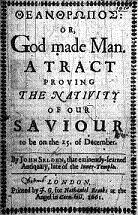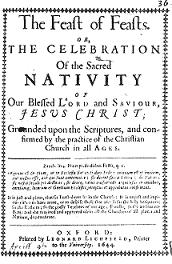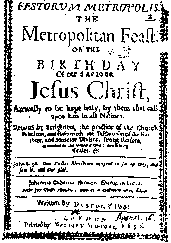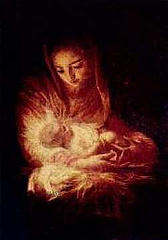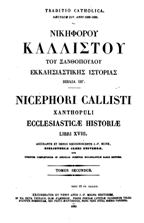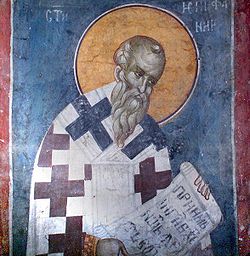Two Jewish New Years
Passover (Pesach) and Rosh Hashanah
Adapted from an article by
N.S Gill
http://ancienthistory.about.com/cs/numeralscalendar/a/aa032001a.htm
The New Year can be said to begin on the 1st of Nisan (Leviticus 23:5) or on Rosh HaShana, the 1st of Tishri (Leviticus 23:24). The beginning of the new year is determined by the mean conjunction (occurrence of the new moon) of the 7th month but can be postponed by one or two days to avoid falling on a Sunday, Wednesday or Friday. Tables... start from the 1st of Nisan, since Nisan is generally called the 1st month and the Hebrew year number changes on this day." (www.holidayfestival.com/Hebrew.html) Selected Jewish Feasts, Fasts and Holidays
Observant, but ordinary Jews and Christians do not always know when the next Passover* and Easter will be. Desk calendars provide the dates now, but in the past, religious leaders had to disseminate the information, because calculation of the holy days, based on a lunar calendar, was difficult. Observant, but ordinary Jews and Christians do not always know when the next Passover* and Easter will be. Desk calendars provide the dates now, but in the past, religious leaders had to disseminate the information, because calculation of the holy days, based on a lunar calendar, was difficult.
New Moons and Lunar Calendars
Lunar calendars must have been the first calendars mankind used. Even nomads would be aware of new and full moons coming every 29.5 days.
Because their religious holidays were celebrated on days of new or full moons, the ancient Jews developed a working method of determining the monthly cycle. In ancient Jerusalem, witnesses appeared before the Sanhedrin (the Second Temple period's Jewish high court) each month to testify they had seen the new moon. Signal fires from the Mount of Olives in Jerusalem broadcast this information to the Jews in the area so they would know the new month had begun.
Lunar Months and Solar Years
Once our ancestors settled down to farming, their need to predict accurately increased. To determine the best times for planting and harvesting, farmers need to know when annual flooding, rainfall, and frost will arrive. A solar calendar permits prediction of the seasons. Months are based on a lunar calendar; years on a solar. For the first year or two, the two systems seem approximately the same, but in the course of even three years, the lunar and solar calendars grow a month apart. Within nine years, they are an entire season apart.
This constant conflict between the easily recorded months and the beginning and ending of the year has led to a variety of calendars. Today, even in areas following the Gregorian calendar, which is solar, Easter is calculated on the basis of a lunar calendar. The Islamic calendar is entirely lunar, and the Jewish calendar (like the ancient Athenian) is a mix of lunar and solar (lunisolar). The calendar of the Romans, until the end of the Republic was lunar, too. The Roman calendar year began in March, with the beginning of each month (the kalends), corresponding with the new moon, and the middle of the month (ides) corresponding with the full.
Intercalation and the Metonic Cycle
Every 19 years the lunar and solar calendars coincide. While the Babylonians and others may have observed the 19-year cycle, this discovery is attributed to and named after a fifth century B.C. Athenian astronomer named Meton. It is this Metonic calendar which mainstream Judaism adopted, probably in the fourth century A.D.** The Qumran community seems to have used a solar calendar.*** There are 12 (Babylonian) named months**** in the Jewish year, with day lengths of either 29 or 30 to approximate the 29.5 day cycle of the moon. Twelve months of 29.5 days amount to 354 days a year, so 11 extra days need to be added to come up with the necessary (approximately) 365 of the seasonal, solar calendar. The Jewish calendar did this from early on by intercalating -- just as the Romans did, until Julius Caesar -- an extra month when the religious leaders told them to.
We don't know when the Jewish religious leaders stopped making yearly decisions about when to intercalate (add extra days to the calendar to adjust for the differences between solar and lunar time), but by the 11th century A.D. it was believed that a standardized calendar had been introduced by Hillel II in A.D. 358-9. An extra, intercalated month now occurs seven times in each nineteen-year cycle: on the third, sixth, eighth, eleventh, fourteenth, seventeenth, and nineteenth years. The name of the intercalated or "leap" month (Adar II or Adar Bet) is a repeat of the name for the twelfth month (Adar I or Adar Alef), since the intercalated month always falls immediately after the first or "alef" month, alef being the first letter of the Hebrew alphabet. Bet is the second.
Secular vs. Religious New Year
The Jewish calendar is designed around its major festivals, Passover and Rosh Hashanah. Rosh Hashanah is the beginning of the secular year and comes in the fall, while Passover is the beginning of the religious year and comes in the Spring. While it may seem confusing to have two beginnings of the year, it is no different from what happens today, in the U.S., where the school year begins in the ninth month, September. There are even special calendars for students based on this school year.
Passover
Nisan, which begins at the new moon, is the beginning of the religious year, according to the Biblical Exodus. It is the month from which the Biblical kings dated their reign, and the month in which Passover, the occasion that started the Exodus of the Jews from Egypt, is celebrated on the fourteenth (at the full moon).
The secular calendar begins in the month of Tishri, the seventh month of the religious year. The month of Tishri, like Nisan, always begins at the new moon.
___________________________________
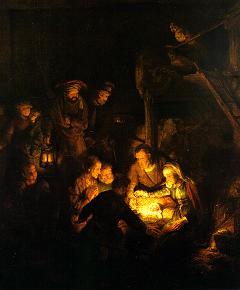
Adoration of the Shepherds
All rights reserved.
 John Seleden’s
John Seleden’s